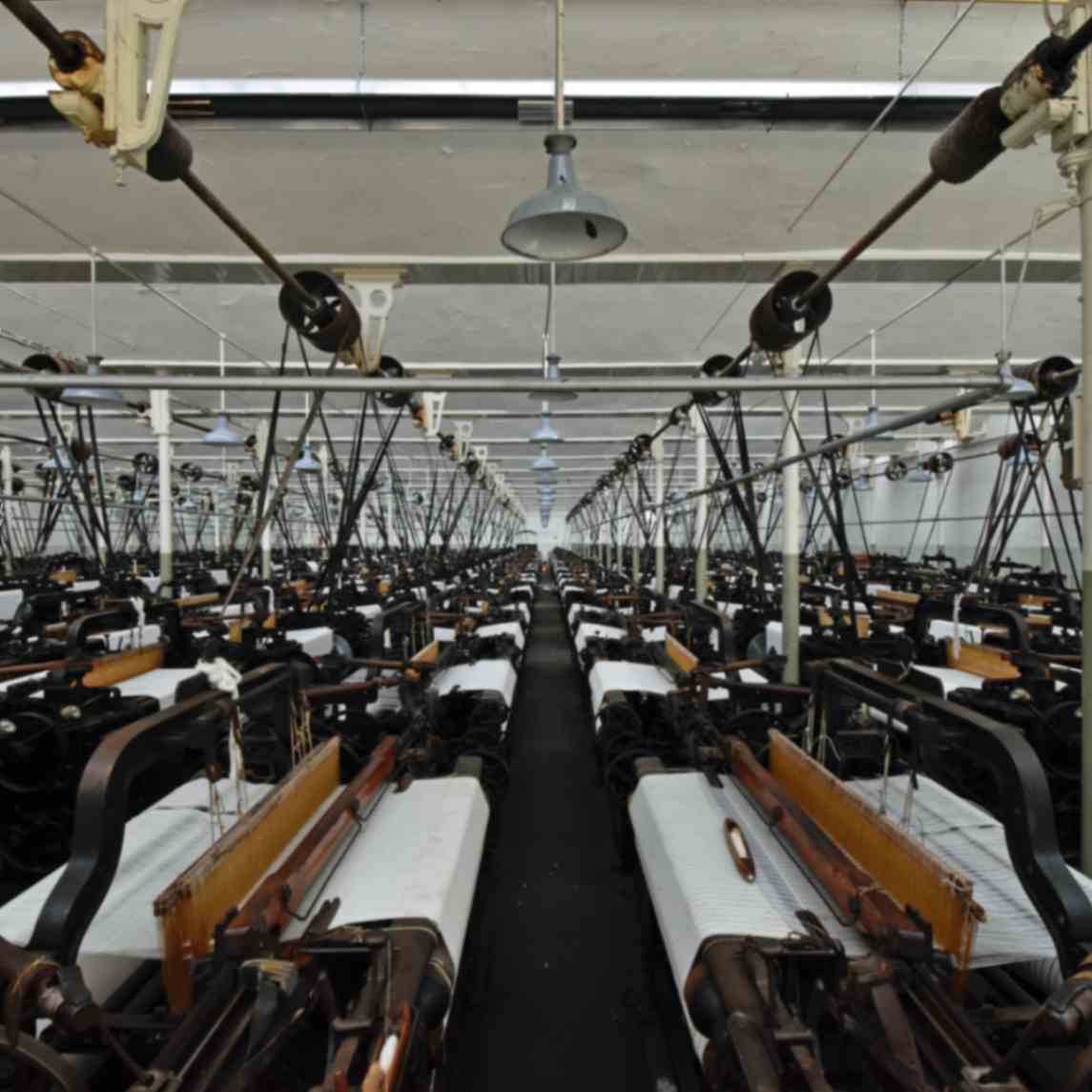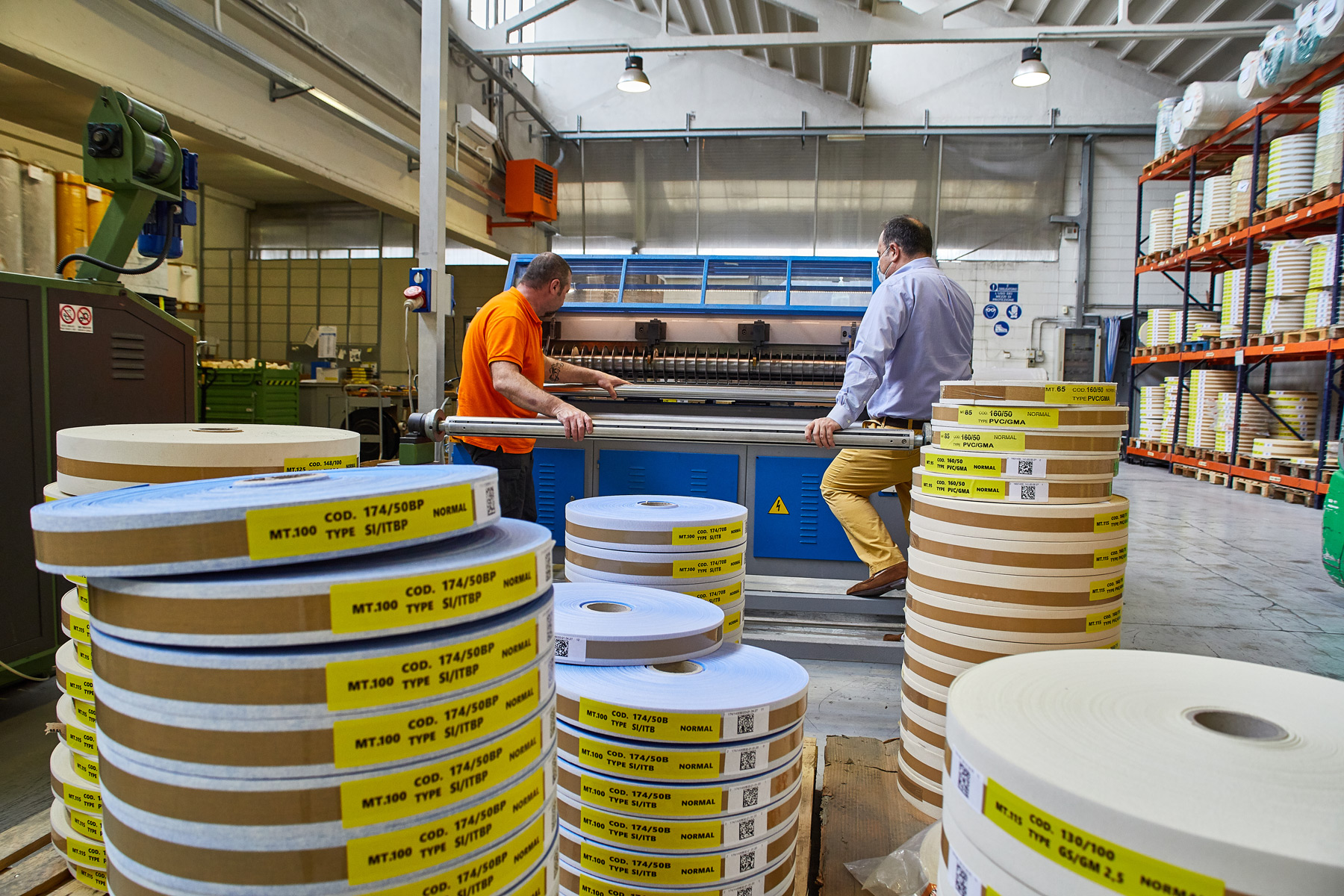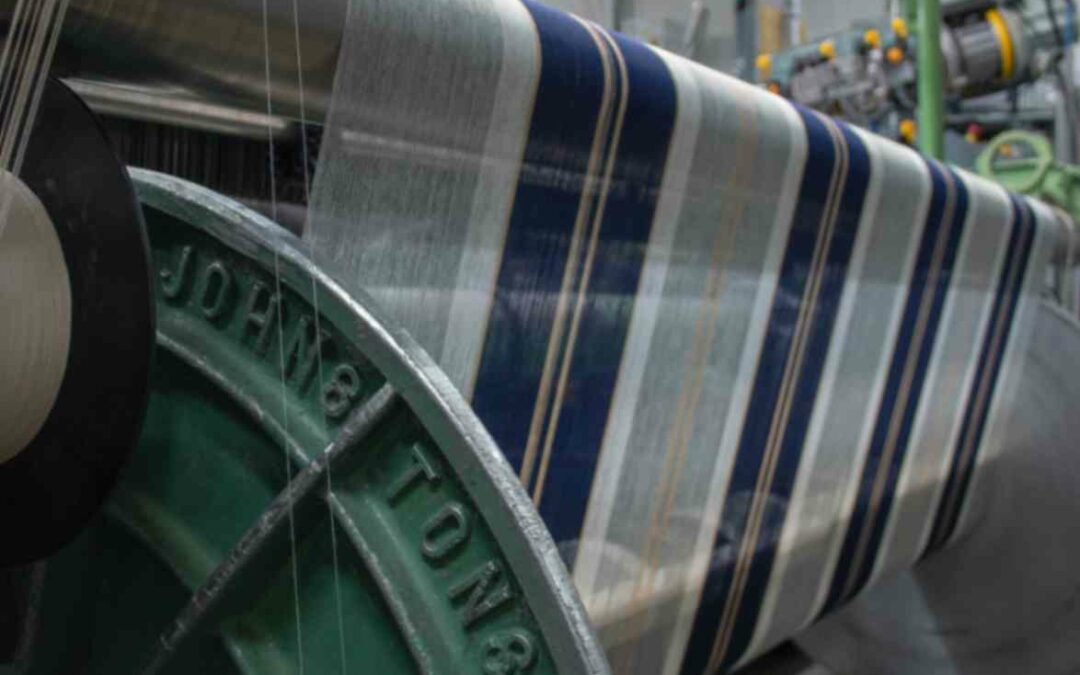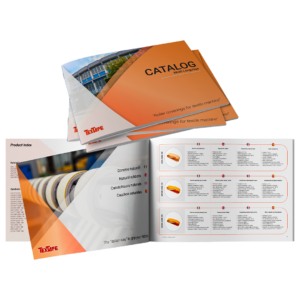In our recent posts, we have talked extensively about our products. In particular, we:
- Have devoted several paragraphs to all the materials we use to create our pieces (we wrote an article for each of the raw materials we use);
- Have written one post about Textape warranties and the intended use of our items;
- And have published something on the manufacturing process of rubber roll coatings.
Today, instead, we’d like to focus on wear and tear and replacement.
Table of Contents
About Textape products durability
As mentioned in a previous article, our pieces are covered by a one-year warranty. This means that after this period, you should remove the old tape and apply to your rolls a new one. Why so? Because during the textile production processes, the roller coating is subjected to heavy stress and wears out little by little.

What are the causes of wear?
Our products are made to perform flawlessly in demanding situations involving high temperatures and chemical aggression. Therefore, it’s not these agents to eat away at the item. Instead, wear and tear is caused by the textile fibers. Specifically, those that wear a rubber roll coating most quickly are the synthetic fabrics (cloths made of polyester are at the top of the list). On the other hand, natural fibers such as silk and cotton may take longer to wear the coating out.
We take this opportunity to warn you: our products must only be installed on the machines they are intended for. At Textape, we study the potential of each material and the characteristics of each machinery, and the items in our catalog are the answer to specific needs. Ultimately, if a rubber roll coating is installed incorrectly, that is, on other types of machines instead of the one it was designed for, it will last much less.
Signs it’s time to replace the coating
Figuring out when it is time to replace the product is easy. Textape items are made to guarantee that during the various manufacturing stages, the fabrics stay wrinkle-free. Thus, if you notice that the fabric rolls processed by your looms or finishing machines have wrinkles or no tension, it’s time to replace the covering.
There is another way to tell it’s time to apply a new coating to your rollers. That is by checking how the fabric enters the machine: if the movement is smooth, the product is still good. But if it’s jerky, it is time to get in touch withTextape for new coils of rubber roller covering.

Why Textape rubber roll coatings are better
At Textape, we make roller covering tape, a completely different product compared to the vulcanized rollers. Below we’ll tell you all the reasons why.
First and foremost, our tape can be applied quickly, and you can install it without disassembling the rolls from the machinery. All you have to do to replace the item, in fact, is clean the rollers from the used sheathing, the old glue, and the tape residue. Once done, you can brush off the rollers with glue and wrap them with a brand-new covering. At Textape, we also sell auto-adhesive versions of the rubber roll coatings, which make the installation process even faster because you can skip the glue brush step.
Generally, those customers who use chemical adhesives to install the new covering on the rollers choose to schedule the tape replacement on Saturday afternoons. That way, they ensure the glue dries and that the product adheres perfectly to the rollers.
This is a rule companies have given themselves, but with our items, you do not necessarily have to set a stop. In fact, some factories return to operation 4 hours after the installation process. And firms that install auto adhesive products have to wait only one hour.
Let us compare our process with the vulcanization of cylinders: this will help you grasp why Textape products are unique. One of the advantages of vulcanization is that roll covering made with this technique can last for years. The reason is that a vulcanized roll has a rubber layer that is 7 cm thick, so the damage textile fibers can do to it is relatively small. However, vulcanization presents a few negative aspects.
For starters, if you need to renew the rubber covering with vulcanization, you must disassemble the rolls from your machinery and handle them to your supplier. In other words, if you opt for vulcanization and do not have any spare roller, you may experience significant downtime and disrupt production for weeks.
In addition, vulcanized rollers are very expensive. And maintenance also involves high costs.

Maintenance of a rubber roll coating
We are almost at the end of this post, so we thought about including a note on maintenance. In particular, we’d like to add something about the roll cleaning. Generally speaking, rollers should be cleaned frequently, especially when the production process involves oils or chemical agents.
Cleaning the covering with solvents may seem the perfect solution for rolls used in demanding manufacturing processes. Unfortunately, not all solvents are compatible with the rubber the roll coating is made of. And while sometimes it takes a few seconds to realize that solvent is no good for the roll, at other times, the damages may be invisible at first. Using the wrong chemical on the coating can cause:
- the softening or the hardening of the covering,
- variations in size,
- tackiness,
- and many other problems.
Consider that the damages above may occur even when you apply the wrong solvent only once. In other words, if you want to extend the life of a rubber roll coating, always ask your supplier what kind of product you can use for cleaning before attempting anything.
Wrapping up
Not only are Textape products easy to install, but spotting when they need to be changed is a no-brainer. We have come to the end of the article. Have more questions about rubber roll covering replacement? Please get in touch – we will be glad to help you.


